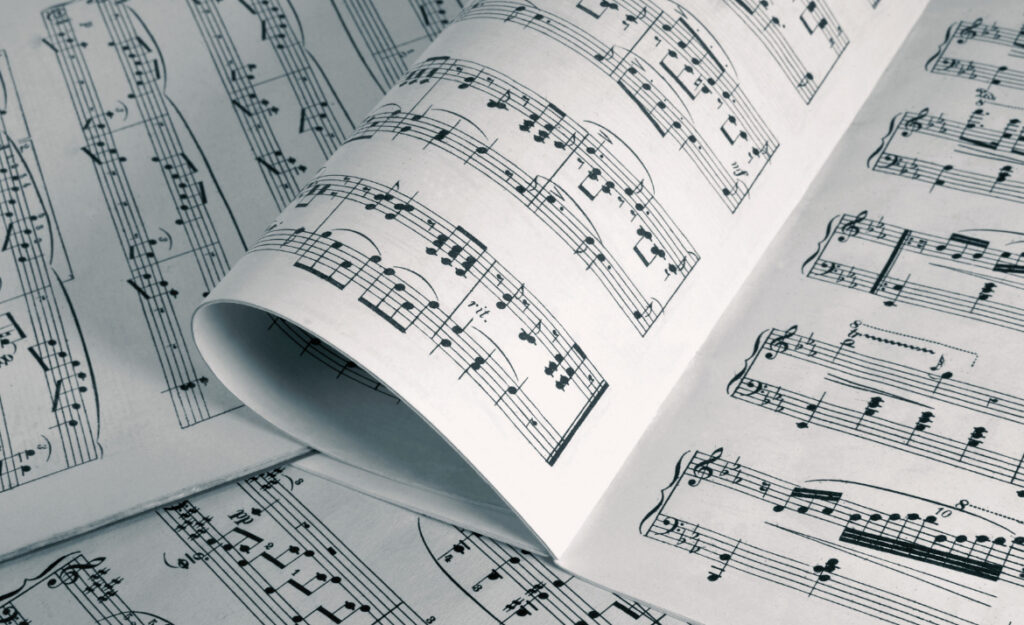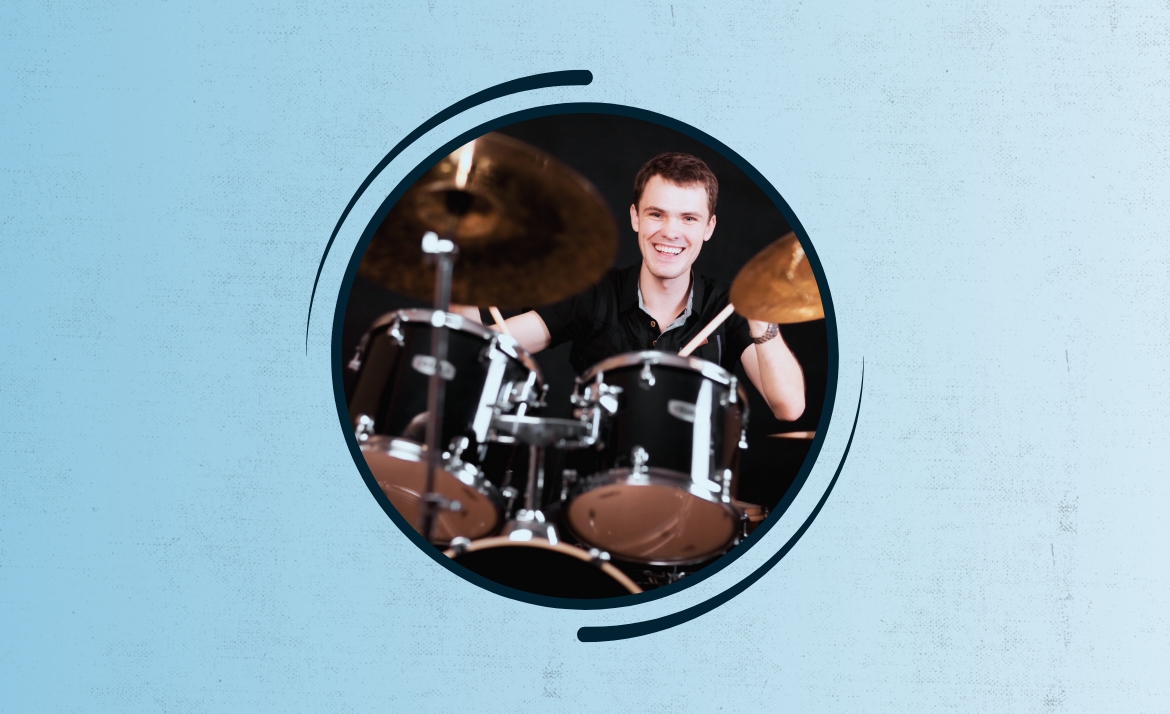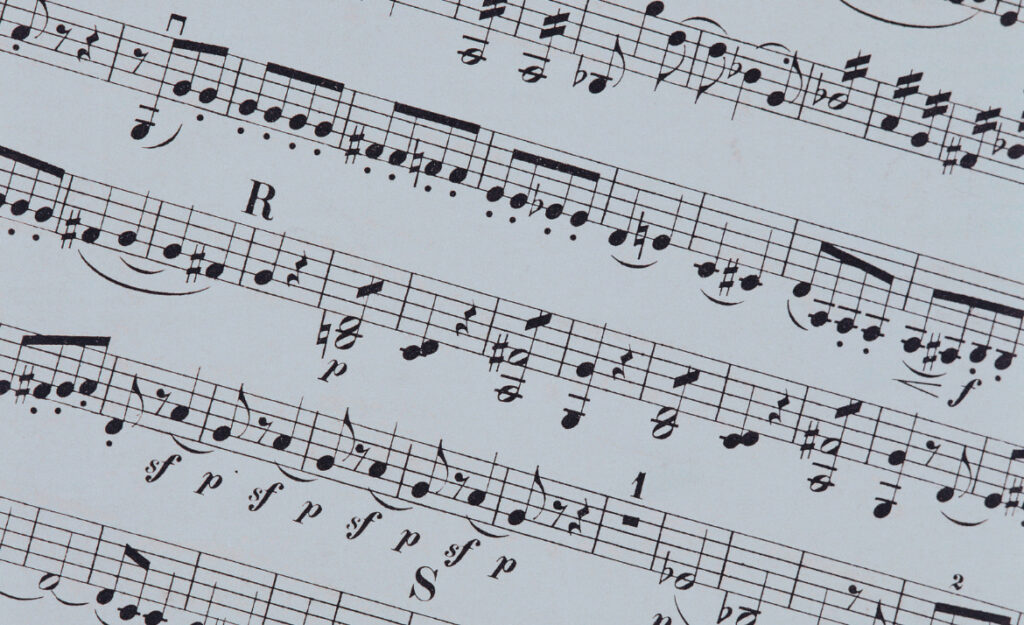When you sit down at your drum kit for the first time, everything can seem a little mysterious. Those lines, dots, and symbols in sheet music look cryptic, but they’re actually your roadmap. Developing confidence as a drummer comes from recognizing how reading sheet music helps you communicate and play with others.
Learning to read drum sheet music isn’t about memorization; it’s about training your ears and eyes to recognize rhythms on the page that match what you play on the kit. The skills you build mean smoother band rehearsals, easier song learning, and more creative freedom once you’re comfortable.
This article covers practical strategies, realistic examples, and step-by-step processes to make drum sheet music second nature. Explore simple analogies, actionable rules, and clear visual tools to start playing—and understanding—drum parts with clarity.

Decoding The Basic Symbols: Build Recognition and Confidence Fast
Begin by focusing on a few essential drum notation symbols and their placements. Recognizing these lets you practice real patterns right away, even if you’re new to sheet music. Practice saying each element out loud as you clap or tap it on your lap.
Try reading a simple measure: notice where the bass drum, snare, and hi-hat are written. If you imagine the staff as a street map, each drum and cymbal has its own unique address. Find these locations using small, repeatable examples.
Pinpoint Staff Positions for Each Drum
Your drum set music is written on a five-line staff. The bass drum usually sits in the bottom space, the snare closer to the middle, and cymbals above the staff lines. Create flashcards to memorize the positioning.
Pretend you’re calling out directions: “Bass drum at the bottom, snare in the center, hi-hat at the top.” Repeat these cues aloud as you scan measures. Connecting the notation with drum set geography makes symbols less intimidating.
Check your understanding by covering up part of a measure, then guessing what’s next based only on symbol placement. Use this exercise as a warm-up during practice sessions to strengthen visual memory.
Grasping Note Values by Counting Aloud
Note shapes show duration. Quarter notes last one count; eighth notes get half a count. Try tapping quarter notes on your snare while counting “1, 2, 3, 4.” Add eighth notes by alternating hands, counting “1 and 2 and.”
Imagine the difference between walking (quarter notes) and jogging (eighth notes). The change in note shape matches how your hands move between slow and quick. Count out loud as you switch between values for a smoother rhythm.
Make a list of common durations—whole, half, quarter, eighth—and clap each one separately. Connecting physical action with count helps cement the relationship between notation and sound.
| Symbol | Drum/Cymbal | Staff Position | Practice Tip |
|---|---|---|---|
| O with a stem | Snare Drum | Third space | Play with right hand, count aloud |
| X above the staff | Hi-Hat | Above top line | TAP with left hand, alternate consistently |
| Filled note head | Bass Drum | Bottom space | Use foot pedal, accent beat 1 |
| Triangle note | Crash Cymbal | Top space | Strike once per measure for emphasis |
| Beam connecting notes | Multiple drums | Across staff | Practice smooth transitions, watch the ties |
Internalizing Rhythm with Step-by-Step Drumming Exercises
The next step is turning sheet music patterns into real drumming by sticking to short sequences. Committing a few bars to muscle memory builds intuition quickly, even if your aim is to play by ear later on.
A two-bar groove might read: hi-hat on every eighth, snare on two and four, bass drum on one and three. Say the pattern aloud before touching your sticks or pedals, matching each beat to a page symbol.

Dynamics Control For Expressive Drumming: Elevate Every Beat
Explore how dynamics control transforms drumming with step-by-step techniques for expressive, emotional performances.One-Bar Groove Routine
Pick a single bar with quarter notes on hi-hat and snare on two and four. Play slowly, count as you go: “one, two, three, four,” emphasizing snare hits.
- Clap or tap the notes on a table as you follow the sheet music. Visual cues reinforce rhythm.
- Record your playing and listen for even spacing. If notes bunch up, slow down and refocus on the counting.
- Try substituting your voice for the snare: make a “pop” sound as you read, mimicking hand movement and sound cue.
- Close your eyes for one repetition, imagining the notes while drumming. This mental imagery helps transition off the page over time.
- Ask a friend or teacher to point at each note as you play live, providing real-time guidance and fixing pacing issues immediately.
Repeat this process until the whole bar feels natural, then try swapping out different kick or snare placements to make the pattern your own variation.
Breaking Down the Backbeat
The “backbeat” usually refers to snare hits on beats two and four. When you spot snare notes in those positions, treat them as anchors—everything else fits around them.
- Keep your right hand on hi-hat, left on snare, and use your right foot for bass drum. Read each component’s symbol. This hand-foot separation becomes second nature with repetition.
- For early practice, mute the toms and cymbals so you can hear snare and bass nuances clearly.
- If your snare sounds weak on sheet music prompts, exaggerate the wrist snap and listen for a crisp pop—emphasize timing, not volume.
- Alternate starting on beat one or two for the same one-bar groove, observing how shifting the “anchor” note changes feel.
- Ask yourself: “Can I play this line three times in a row without stopping?” Complete stints indicate readiness to increase tempo or complexity.
Successful grooving on basic patterns unlocks confidence to tackle more complex fills and transitions with the same approach.
Using Visual Analogies to Simplify Sheet Recognition
Analogies turn abstract sheet music into relatable images. If you see the drum staff as a train track and each note head as a unique car, patterns become memorable journeys instead of coded messages.
Aligning hand and eye movement with this “journey” method links physical action to what you see on the staff, helping you stay oriented during real practice sessions or performances.
Traffic Light Practice for Dynamics
Think of each row on the staff as a traffic light: red for loud (crash/bass), yellow for medium (snare), and green for soft (hi-hat). Play one bar and adjust dynamics with each hit to cement volume cues.
Use muted sticks or practice pads to vary attack force safely while visualizing these color-based cues from the sheet music. Small, vivid details strengthen memory compared to simply reading notes.
Transfer this dynamic control from your practice pad directly to your drum kit. Over time, you’ll self-correct volume and rhythm mistakes on the fly during band play.
Connecting Drum Fills to Real-World Actions
Imagine your fills as speedy painting brushes moving across the kit, mirroring the lines and beams you see on the sheet music. This visual trick keeps fills smooth and deliberate rather than rushed.
Trace the fill pattern’s beam with your finger first, then mimic that motion with your sticks. Connecting big visual movement to specific sheet music sequences makes complex passages easier to manage.
After practicing visually, play the fill three times and pause to check if your stick path matches the imaginary line. This process develops muscle memory for common fill patterns found in rock and pop songs.
Drum Patterns You Can Use: Applying Theory to Real Grooves
The most effective path to fluency combines theory with real-world applications. By playing standard drum grooves from sheet music, you learn the connection between written patterns and their sonic outcomes.
Try a simple 4/4 rock beat mapped on two lines: hi-hat ticks consistently, snare falls on beats two and four, and the bass drum alternates with the hi-hat. Assign each component a clear, repeatable role as you read.
Practicing with the Money Beat
The “Money Beat” is a staple for drummers. It’s found in countless chart-topping songs. Sheet music generally displays the hi-hat on every eighth note, snare on two/four, and bass on one/three. Start slowly, aiming for accuracy.
Bands count on this groove for stability and energy. When you read and play it smoothly, you’ll find yourself syncing better with other musicians and laying a foundation others can build on.
After mastering this, swap the hi-hat for a ride cymbal. Feel how the groove locks into place differently based on your choice, while your reading skill keeps pace.
Syncopated Patterns Build Versatility
Syncopation means accenting rhythms that aren’t where your ear expects. Find bars in sheet music that have snare or kick off the main beats, and play these patterns at half-tempo until comfortable.
This style makes your drumming more dynamic and less robotic. Watch for rests and spaces—they matter as much as the notes. Practice pausing deliberately so your reading matches your actual playing.
A quick exercise: swap accents between hands for a measure, then return to your core beat. This mirrors the unpredictability in syncopated sheet music and trains fast adaptation.
Building Hand-Foot Coordination from Written Exercises
Sheet music for drums provides targeted exercises meant to connect your hands and feet—an essential coordination skill for every drummer. Practicing these written drills daily leads to natural, fluid movement between limbs.
Use short, two-bar exercises combining snare, hi-hat, and kick, focusing on clear reading then execution. Over time, you’ll link what you see, what you hear, and what your body does, closing the loop between notation and performance.

Three-Way Independence Drills
Set a loop with your right hand playing hi-hat eighth notes, left hand the snare (beats two and four), and right foot the bass drum (beats one and three). Sight-read this sequence directly from simple sheet music excerpts.
Repetition is key—each limb’s part matches a distinct line or symbol on the staff. A metronome reinforces steady timing, syncing visual cues with muscle memory every few bars. Start slow, keeping every note readable and even.
After several successful rounds, add a spoken count: “Right-left-foot, two-four-one-three.” Pairing speech with reading solidifies independent thinking for each limb, making transitions between written patterns easier over time.
Switching Up Limb Lead Roles
Rotate your lead hand or foot every few repetitions. For example, begin with the left hand leading on snare, then switch to the right foot driving the rhythm. Each switch brings the staff to life in a new way.
This prevents automatic pilot drumming, forcing your eyes and body to readjust to fresh patterns. You’ll soon spot similar sequences in different songs and adapt without pausing or looking away from the sheet music.
Document these experiences in a practice journal: “Switched to right foot lead, noticed smoother transitions, still need to check staff for snare cues.” Reviewing notes from real sessions helps lock in your progress.
Developing Speed and Accuracy Through Focused Practice Routines
Improving fluency requires routines that blend sight reading and repetition. Practicing with systematic variation discourages plateauing and exposes you to diverse notation you’ll encounter in most drum sheet music.
Set your metronome to a slower tempo at first, then gradually increase speed while tracking accuracy. Use short, written warm-ups for each limb followed by combining these into full grooves or fills you see in music charts.
Spot-Reading for Faster Recognition
Select random two-bar phrases from sheet music collections, then challenge yourself to play them on the first try. Score your accuracy by ticking off beats you nail without stopping, ignoring mistakes for one round.
Repeat three times, focusing on different mistakes each time: timing, drum placement, or dynamic control. This transparent process builds confidence and resilience, preparing for band practice or live playing scenarios.
If you freeze, practice saying the pattern out loud before playing again. Verbalizing tough spots builds quick note recall and prevents anxiety during challenging lines or fills found in professional charts.
Conclusion: Your Next Steps to Confident Drum Reading
You’ve explored concrete skills—from basic note recognition to applying essential grooves. Each technique reinforces your ability to read and execute drum sheet music with real-world utility in mind.
Drum notation opens up countless opportunities for new songs, jam sessions, and creative expression in any band context. Frequent, intentional practice strengthens the muscle memory and pattern-recognition skills at the core of efficient drumming.
Remember, every bar you read and play connects you with drummers worldwide, supporting growth, collaboration, and fun. Keep your page, sticks, and metronome ready—your progress will show every time you count in.



